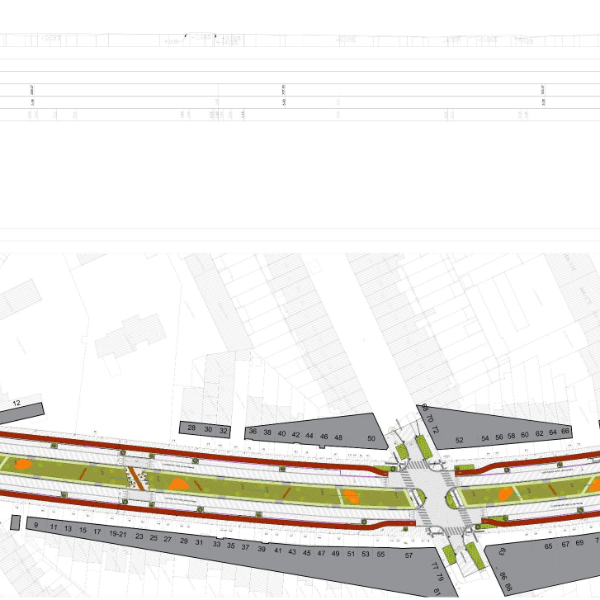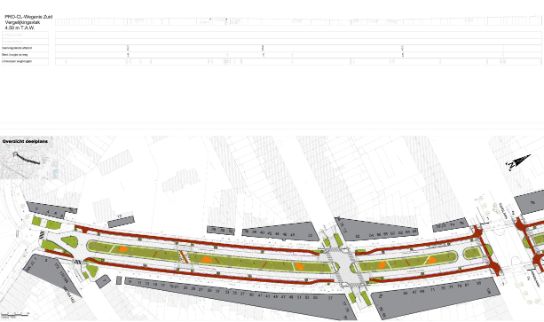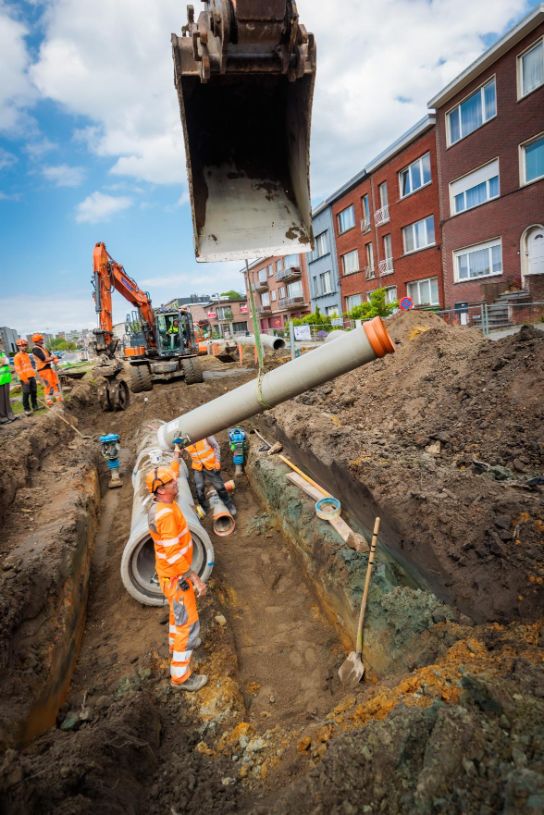Catershoflaan Merksem

Catershoflaan Merksem
Witteveen+Bos examined the water management and technical implementation of the renewed Catershoflaan in Merksem on behalf of water-link. The standout feature is the central median: an 8-meter wide and 50-centimeter deep green zone surrounded by various types of plants. The central median also contains an infiltration basin to capture and gradually release rainwater, preventing the sewer system from becoming overwhelmed during heavy downpours.
Green future and water management
The redevelopment of Catershoflaan is now in its final phase. An important goal was to improve the drainage of rainwater, which is achieved by channeling rainwater through openings in the curbs to the central median, where it infiltrates through a basin. The cobblestones in the parking lanes also contribute to infiltration. During heavy rainfall, excess water is diverted via an underground rainwater drainage pipe. The sewer pipes have been enlarged to accommodate heavier downpours, and restrictors ensure delayed drainage to relieve the downstream system.
Above ground, the central median is a green oasis with a mix of tree types, seating squares, adapted lighting, and flowering plants, making the entire median an attractive additional green space for the neighborhood.
Participation and innovation
Implementing blue-green solutions in urban areas remains a bold choice, given the many aspects that need to be considered. Community participation is a crucial lever in achieving this. During the participation process, in which street residents were involved in the design, the idea of the central median was born.
The new layout includes not only a separated sewer system but also new bicycle and pedestrian paths, permeable parking lanes, a narrowed roadway, traffic plateaus, trees, planting beds, bike racks, and new lighting.

Sewer Pipe in Circular Sulfur Concrete
The eye-catcher on Caterhoflaan is the wide, green central strip with an infiltration basin that provides attractive neighborhood greenery. But there is also a first underground: a separated sewer system with pipes made of circular sulfur concrete.
Much less energy is needed to produce this type of pipe, resulting in a CO² emission reduction of at least 50 to 85%. Additionally, it is 100% circular. The pipe is made from a byproduct of oil refining. After use, the pipe can be melted at a relatively low temperature of 130°C and re-solidified into a different shape. And this can be done infinitely.
.jpg)
More information?

Our projects
Every year we work on almost 5,000 projects on water, infrastructure, environment and construction.
